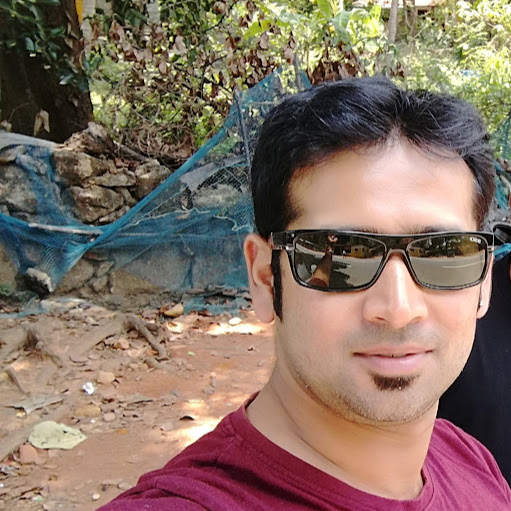Raghav Rao
age ~49
from Fremont, CA
- Also known as:
-
- Rao Raghav
Raghav Rao Phones & Addresses
- Fremont, CA
- 575 Remington Ct, Sunnyvale, CA 94087 • 408 733-2177
- 1055 Manet Dr, Sunnyvale, CA 94087 • 408 733-2177
Wikipedia

Vijay Raghav Rao
view sourcePandit Vijay Raghav Rao (born 3 November 1925) is an Indian flutist. He was born in Madras (now Chennai), India. He currently resides in Springfield, VA, USA;
Resumes

Staff Software Engineer - Portal Accounts Receivable And Vr
view sourceLocation:
575 7Th St, San Francisco, CA 94103
Industry:
Information Technology And Services
Work:
Facebook Nov 2018 - Dec 2018
Staff Software Engineer - Blockchain Product
Facebook Nov 2018 - Dec 2018
Staff Software Engineer - Portal Accounts Receivable and Vr
Facebook Jul 2017 - Nov 2018
Senior Android Engineer - Building 8
Navdy Jun 2015 - Jul 2017
Senior Android Software Engineer
Parsable Jun 2014 - Jun 2015
Principal Android Engineer
Staff Software Engineer - Blockchain Product
Facebook Nov 2018 - Dec 2018
Staff Software Engineer - Portal Accounts Receivable and Vr
Facebook Jul 2017 - Nov 2018
Senior Android Engineer - Building 8
Navdy Jun 2015 - Jul 2017
Senior Android Software Engineer
Parsable Jun 2014 - Jun 2015
Principal Android Engineer
Education:
Rohailkhand University 1993 - 1997
Bachelors, Computer Science, Engineering, Computer Science and Engineering Pg Center, Kolar
Rohailkhand University, India
Bachelors, Computer Science, Engineering, Computer Science and Engineering
Bachelors, Computer Science, Engineering, Computer Science and Engineering Pg Center, Kolar
Rohailkhand University, India
Bachelors, Computer Science, Engineering, Computer Science and Engineering
Skills:
Java
Android
Software Design
Distributed Systems
Web Services
Agile Methodologies
C#
Embedded Systems
C
C++
Enterprise Software
Web Applications
Operating Systems
Device Drivers
Linux
Tcp/Ip
Xml
Rest
Embedded Software
Multithreading
Windows Ce
Vxworks
Hp Ux
Corba
Snmp
.Net Compact Framework
Network Security
Centos
Windows Mobile
Tcp/Udp
Rapid Prototyping
Protocol Development
Windows Server
Solaris
Embedded Linux
Agile
Win32
Posix
Http
Rtsp
Jms
Activemq
Android Ndk
Wearables
Soap
Android
Software Design
Distributed Systems
Web Services
Agile Methodologies
C#
Embedded Systems
C
C++
Enterprise Software
Web Applications
Operating Systems
Device Drivers
Linux
Tcp/Ip
Xml
Rest
Embedded Software
Multithreading
Windows Ce
Vxworks
Hp Ux
Corba
Snmp
.Net Compact Framework
Network Security
Centos
Windows Mobile
Tcp/Udp
Rapid Prototyping
Protocol Development
Windows Server
Solaris
Embedded Linux
Agile
Win32
Posix
Http
Rtsp
Jms
Activemq
Android Ndk
Wearables
Soap
Certifications:
Dat203.2X: Principles of Machine Learning
Cs198.1X: Bitcoin and Cryptocurrencies
Cs198.1X: Bitcoin and Cryptocurrencies

Applications Developer At United Biosource Corp.
view sourcePosition:
Lead Applications Developer at United Biosource Corp.
Location:
San Francisco Bay Area
Industry:
Information Technology and Services
Work:
United Biosource Corp. since Jan 2006
Lead Applications Developer
Lead Applications Developer
Education:
University of Madras
BS, Computer Science and Engineering
BS, Computer Science and Engineering

Raghav Rao
view sourceLocation:
United States

Raghav Rao
view source
Raghav Rao
view source
Raghav Rao
view sourceUs Patents
-
Installation Of Network Services In An Embedded Network Server
view source -
US Patent:7571221, Aug 4, 2009
-
Filed:Apr 3, 2002
-
Appl. No.:10/115403
-
Inventors:Raghav Rao - Sunnyvale CA, US
Marc Nijdam - Mountain View CA, US
Ravikumar Pisupati - San Jose CA, US -
Assignee:Hewlett-Packard Development Company, L.P. - Houston TX
-
International Classification:G06F 15/16
-
US Classification:709220, 709221, 709222
-
Abstract:Various systems and methods are provided for maintaining an embedded network server. In one embodiment, one method includes the steps of providing a dynamic service loader in the embedded network server, receiving a service request to install a dynamic service in the embedded network server, and installing the dynamic service in the embedded network server with the dynamic service loader. The dynamic service may be installed in the embedded network server dynamically, thereby allowing other aspects of the embedded network server to operate without disruption.
-
Deferred Memory Allocation For Application Threads
view source -
US Patent:20040003188, Jan 1, 2004
-
Filed:Jun 27, 2002
-
Appl. No.:10/184863
-
Inventors:Raghav Rao - Sunnyvale CA, US
-
International Classification:G06F012/00
-
US Classification:711/154000, 711/118000
-
Abstract:Various systems and methods are provided that facilitate deferred memory allocation. In one method, an attempt to allocate an amount of memory for an application thread is made. If the attempt was unsuccessful and if the application thread is designated for deferred memory allocation, then the application thread is stored in a holding queue. Once the application thread is stored in the holding queue, periodic attempts are made to reallocate the amount of memory for the application thread.
-
Miscellaneous Coating, Battery, And Clock Features For Artificial Reality Applications
view source -
US Patent:20220191578, Jun 16, 2022
-
Filed:Feb 23, 2022
-
Appl. No.:17/678972
-
Inventors:- Menlo Park CA, US
Raghav Rao - Fremont CA, US
Alex Ockfen - Bothell WA, US
Rajesh Prasannavenkatesan - Menlo Park CA, US
David Brokenshire - Maidenhead, GB
Eric Mun Khai Leong - Kirkland WA, US
Jacklyn Ann Holmes Herbst - Bellevue WA, US
Matthew Aaron - San Francisco CA, US
Jason Michael Battle - Bothell WA, US
Dong Rim Lee - San Jose CA, US
Arman Boromand - Issaquah WA, US -
International Classification:H04N 21/43
H04N 21/4363
C09D 5/22
H01M 50/124
H01M 50/188
H01M 50/148
G06F 1/28 -
Abstract:Some embodiments relate to a method for performing a battery power-based control of an in-call experience based on shared battery power information. Some embodiments relate to a coating of a headset that has a first emissivity over an ultraviolet band and a near-infrared band, a second emissivity over a visible band, and a third emissivity over a mid-to-far infrared band. Some embodiments relate to an aggregate coating of a headset. A thin films is applied to a surface of the headset, and a paint coating is applied to a surface of the thin film to form the aggregate coating. Some embodiments relate to a method for a high-definition multimedia interface derived network timing for distributed audio-video synchronization. Some embodiments relate to a battery containment structure with a metal chassis having surfaces coated with electrical insulators configured to receive a battery, and a lid coupled to the metal chassis.
-
Systems And Methods For Digital Workflow And Communication
view source -
US Patent:20150286976, Oct 8, 2015
-
Filed:Apr 6, 2015
-
Appl. No.:14/679981
-
Inventors:- San Francisco CA, US
Raghav Rao - Fremont CA, US
Wajahat Ali Siddiqui - San Francisco CA, US
Zachary Harrison Fogg - Beltsville MD, US
Devansh Gupta - San Francisco CA, US
Ryan Alexander Junee - San Francisco CA, US
Vighnesh Ajay Rege - San Mateo CA, US -
International Classification:G06Q 10/06
H04L 29/08
G06F 3/0481
G06F 17/22 -
Abstract:Systems and methods for authoring and performing procedural workflows, and engaging in multimedia communication, remote assistance, training, data entry, inventory management, authentication, and secure networking using a hands-free or substantially hands-free wearable digital device are described. In one implementation, a user logs into a secure network using existing credentials, and a Quick Response Code is generated to temporarily authorize the user's wearable device within the secure network. In another implementation, information is encrypted and transferred between a computing device and a remote system, and the computing device is verified as being connected to a particular network and located within a particular geofence. In a further implementation, an interface for authoring a procedural workflow includes defining workflow steps based on selected primitives, and displaying rendered previews of the workflow as it would appear on different user devices.
-
Systems And Methods For Digital Workflow And Communication
view source -
US Patent:20150288682, Oct 8, 2015
-
Filed:Apr 6, 2015
-
Appl. No.:14/679953
-
Inventors:- San Francisco CA, US
Raghav Rao - Fremont CA, US
Ryan Alexander Junee - San Francisco CA, US -
International Classification:H04L 29/06
-
Abstract:Systems and methods for authoring and performing procedural workflows, and engaging in multimedia communication, remote assistance, training, data entry, inventory management, authentication, and secure networking using a hands-free or substantially hands-free wearable digital device are described. In one implementation, a user logs into a secure network using existing credentials, and a Quick Response Code is generated to temporarily authorize the user's wearable device within the secure network. In another implementation, information is encrypted and transferred between a computing device and a remote system, and the computing device is verified as being connected to a particular network and located within a particular geofence. In a further implementation, an interface for authoring a procedural workflow includes defining workflow steps based on selected primitives, and displaying rendered previews of the workflow as it would appear on different user devices.
Plaxo

Raghav Rao
view sourceBangalore

Raghav Rao
view source
Raghav P Rao
view sourceYoutube

G Raghav Rao
view source
Rao Raghav Rao
view source
Raghav Rao
view source
Raghav Rao
view source
Rao Raghav
view source
Akella Raghav RAo
view source
Rao Raghav
view source
Raghav Rao
view sourceMyspace

Vijay Raghav Rao Free Mu...
view sourceVijay Raghav Rao's official profile including the latest music, albums, songs, music videos and more updates.
Googleplus

Raghav Rao
Work:
Tekelec - Sr Technical Sales Manager

Raghav Rao
Tagline:
I

Raghav Rao

Raghav Rao

Raghav Rao

Raghav Rao

Raghav Rao

Raghav Rao
Flickr
Get Report for Raghav Rao from Fremont, CA, age ~49








